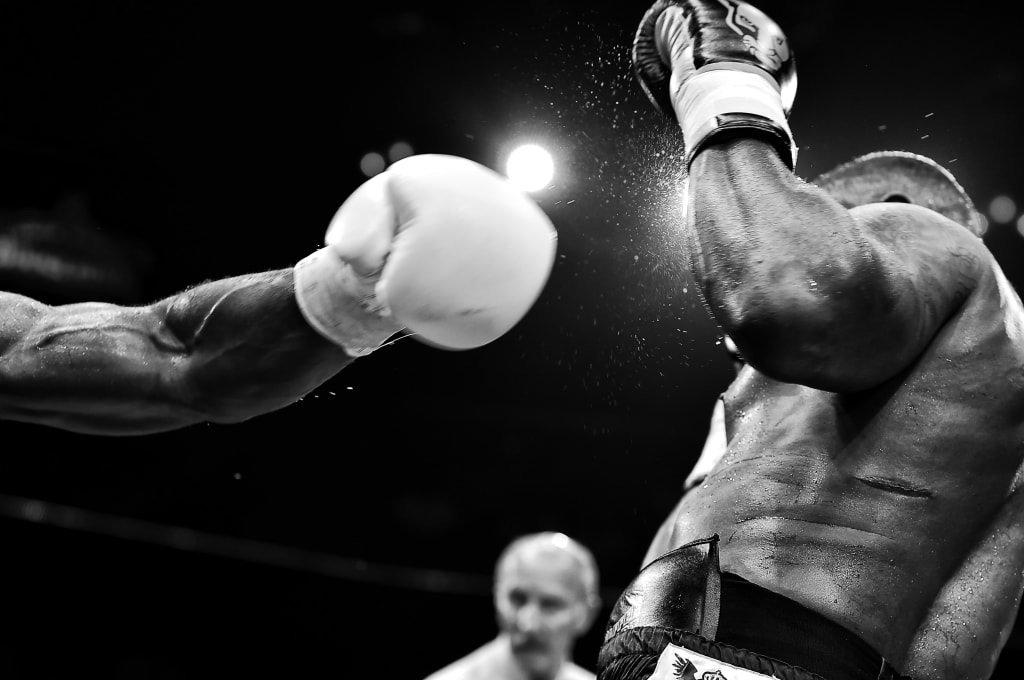The Leader's Need To Fight - Understanding When And How To Engage In Conflict
(With A Martial Arts Perspective)

In Life, there are some things that are inevitable.
One of those is conflict.
No matter how amazing of a Leader you are, no matter how niche of a product or service you have, no matter how high your EQ is, and no matter how in sync your team is, you will always find conflict.
It is the role of a Leader to understand and create the best path through conflict.
However, most Leaders fail to comprehend the nuances of conflict, and how to "Fight".
A Martial Arts Perspective To Conflict
When most people think of a "Fight", they immediately think of MMA (or a similar variation).
A Cage.
Two Opponents.
One Belt or Trophy on the Line.
There are only two ways out - Win, or get beaten to a pulp.
However, this is a very poor and limited understanding of what "Fighting" really is and how it plays out in reality.
Especially from a Leadership perspective.
What most people forget is that MMA is a show - albeit a truly brutal one with real punches, kicks, and blood.
The cage is a stage, the opponents fight for one purpose - to put on a show.
There are specific rules that must be abided by, and there is only one specific goal to the fight.
These outcomes are ONLY true in that specific type of ring.
When you look at Martial Arts throughout time, most of what is true in "that" ring, is completely false in every other area of life.
Some martial arts were purposed specifically only for Self-Defense, where the goal was not to "win", but to "survive".
This is true in styles like Tae-Kwon-Do and Capoeira.
In both countries of origin, practicing "martial arts" by parties "not in power" was not only outlawed, but punishable by death.
These styles were created so that someone who "legally" was allowed to be taken advantage of could escape mortal danger.
Some martial arts were designed specifically to stop fighting from getting worse and to calm situations down.
This is true in a style like Aikido, where the goal is not to "win", but to make fighting futile.
In these kinds of styles, the goal is for both parties to come out with minimal damage, and possibly as even friends.
Some martial arts styles have changed dramatically over the centuries of their existence, where the goal isn't even to use the techniques in self-defense!
Some styles have simply become movement practices, where the goal is to improve your health, focus your mind, and develop your wellness.
This is true in certain schools of Tai Chi (not all though), where the moves have long since been disassociated with any martial aspects and have been focused on improving only the individual.
Still, there are some styles that have been designed to overcome as many opponents as possible as quickly as possible, with the least amount of training necessary.
This is exactly how Krav Maga was designed.
The Israeli government needed a style of martial art that they could quickly train their Defense Forces with that could help them fight in real-world situations quickly and efficiently.
All of these styles have real-world purposes and benefits, yet look at conflict in very different ways.
The Leader's Lesson
Not every conflict you have to engage in as a Leader needs to be a brawl of one person against another, with only one victor.
If you approach every conflict like this, you will end up with a team whose goal is to destroy you.
Over time, you will have no allies, only enemies.
Every ring fighter will tell you, no matter how amazing you are, eventually you will lose, or you will be forced to retire.
You will get older, and more tired, while the opponents will seem to get younger and stronger.
You may have moments of glory, but they will eventually fade, and you will be left broken.
But it doesn't need to be this way.
If you understand that most conflict isn't a ring match, you can actually come out stronger, with allies who fight with you.
There are some conflicts in which you will be forced to defend yourself, like Tae-Kwon-Do or Capoeira.
Your goal will only be to remain standing at the end of the conflict.
Perhaps you will need to defend the actions of someone on your team, or even defend your own actions.
The goal isn't to beat others to a pulp, the goal is survival.
Other conflicts will require a more subtle hand, where you redirect energy toward a goal for everyone to come out together, like in Aikido.
Perhaps you have passionate members on your team that are conflicting about multiple great project ideas, and perhaps you can guide the conflict in a way where no one gets damaged, and everyone comes out better.
Some conflicts will require you to face yourself, like Tai Chi.
Perhaps you made a decision that backfired or had unintended consequences, and you're beating yourself up over it.
The battle is within yourself, not with others.
Yet in other conflicts, perhaps you need to end the conflict as quickly and efficiently as possible so that no more damage can be done.
You may often see this when something goes wrong and it becomes an HR matter where certain behaviors are unacceptable and require immediate action to be taken.
As a Leader, it is important to understand what type of fight you are getting into and understand the best way to approach that conflict.
There is never "one way" to fight a battle or engage in conflict, and understanding your best set of techniques for a certain situation can become defining for you as a Leader.
About the Creator
Cody Dakota Wooten, C.B.C.
Creator of the Multi-Award-Winning Category "Legendary Leadership" | Faith, Family, Freedom, Future | The Legendary Leadership Coach, Digital Writer (500+ Articles), & Speaker
Enjoyed the story? Support the Creator.
Subscribe for free to receive all their stories in your feed. You could also pledge your support or give them a one-off tip, letting them know you appreciate their work.






Comments
There are no comments for this story
Be the first to respond and start the conversation.